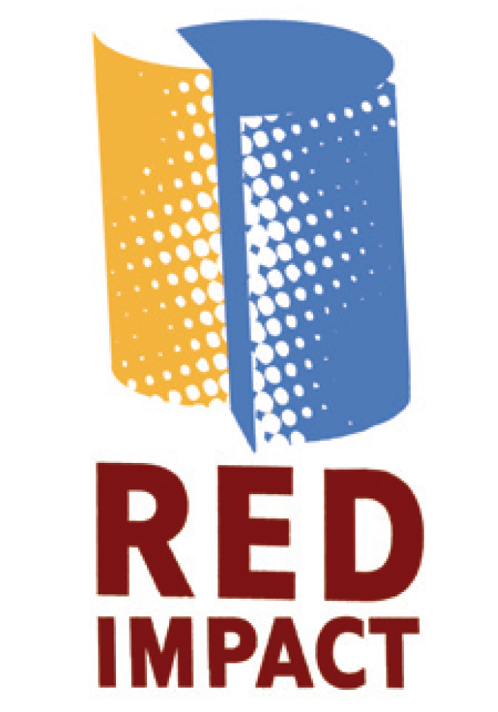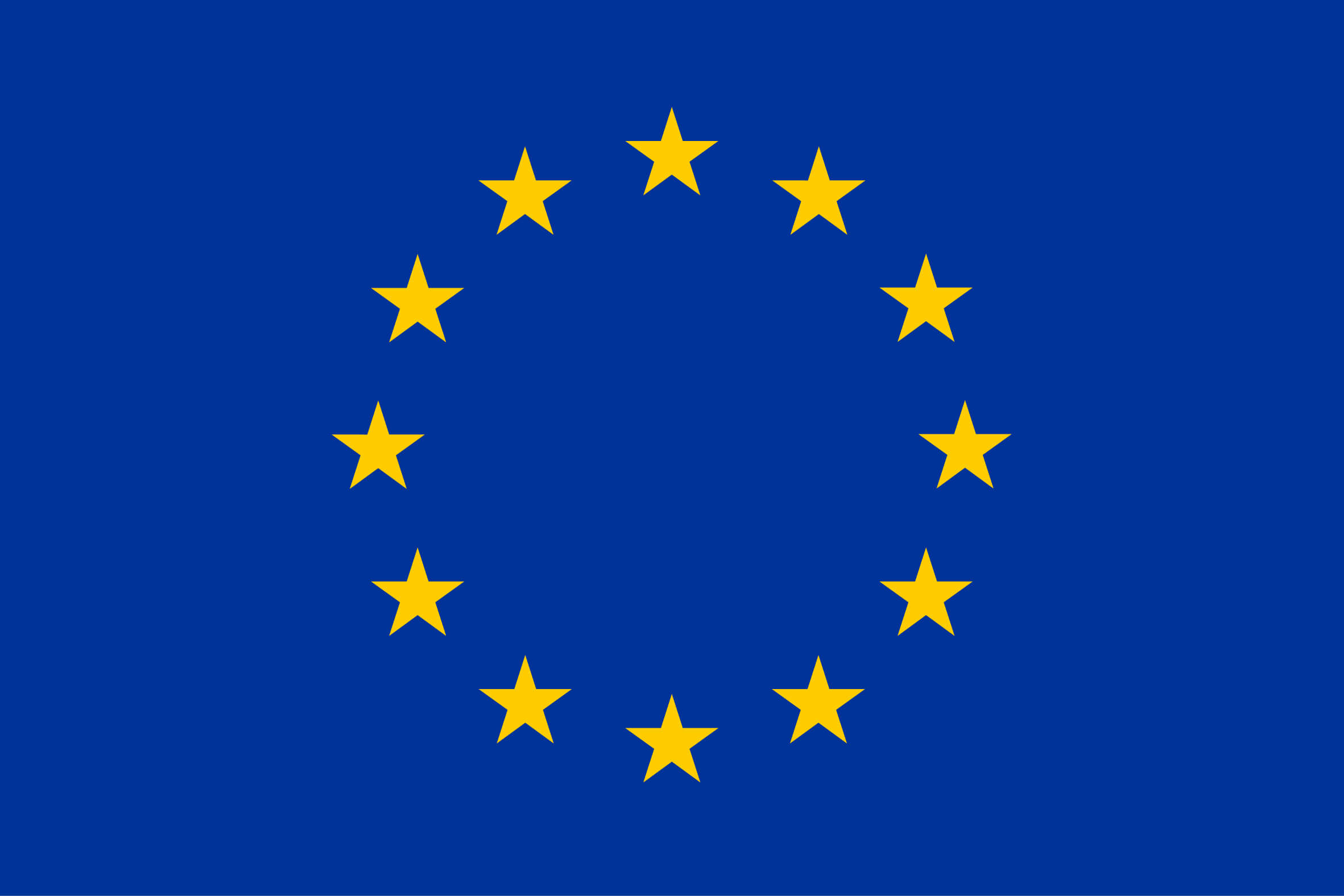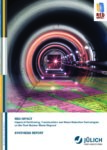RED-IMPACT: Impact of P and T and Waste Reduction Technologies on the Final Nuclear Waste Disposal
The RED-IMPACT project (Impact of P&T and Waste Reduction Technologies on the Final Nuclear Waste Disposal) was a three and a half year EU project to assess the impacts of different partition and transmutation and other waste reduction technologies on the nuclear fuel cycle, with a focus on the effects on the final disposal of wastes.
Overview
Project Dates: 01/03/2004 – 30/09/2007
Project Status: Closed
Website: N/A
The dominant existing fuel cycle for nuclear reactors is the open or ‘once-through’ cycle in which nuclear fuel is manufactured from mined uranium, used in a reactor, then (nominally) disposed of. There are potential alternatives to this type of fuel cycle, however, which can reduce the overall waste generated or reprocess the waste for reuse or elimination.
Plutonium and Minor Actinides (MA), such as americium, curium and californium, comprise the majority of the long-term radiotoxic inventory of most spent nuclear fuels. Partitioning and Transmutation (P&T) strategies reprocess spent fuel to separate plutonium and MA and subsequently eliminate or reduce them by re-using them as fuel (in the case of plutonium) or otherwise transmuting them (for MA). The transmutation of MA will require the development of technologies such as Accelerator Driven Systems (ADS) or Gen IV reactors.
The RED-IMPACT project explored the relative impacts of Reuse and P&T (R/P&T) strategies on the whole nuclear fuel cycle, with a focus on waste management and geological disposal. The outputs of the project contribute to improved industrial decision-making in the sector, providing an assessment of short and long-term approaches to developing closed fuel cycles and their relative competitiveness across a range of factors.
Objective
The aim of the RED-IMPACT project was to analyse the relative impacts of R/P&T strategies on the nuclear fuel cycle, with a focus on the effect of different strategies on waste management and geological disposal. This included consideration of short-term (existing reactors and advanced fuel cycles), medium-term (Gen III+ reactors and more advanced fuel cycles) and long-term options (more speculative technologies such as ADS, Gen IV reactors, innovative fuel cycles).
The overall goals of the work programme were supported by the following intermediate-level goals:
- Overview and analysis of different waste management strategies including the type of geological disposal, irretrievability vs. retrievability, long-term vs. intermediate storage etc. and identification of relevant operations.
- Elaboration of industrial deployment scenarios to identify the near-/medium-term technical options for R/P&T, their state of readiness, necessary R&D, realistic schedule till deployment and potential market shares. Eastern European reactors (VVER, CANDU) as well as BWR and their potentials were also to be addressed.
- Performance indicators for the different steps of the fuel cycle affected by R/P&T (e.g. radioactive releases from fuel cycle, dose on workers, long-term radiological impact, cost etc.): mining/milling, front-end of fuel cycle facilities, reactor/transmuter operation, back-end including intermediate storage, transport, reprocessing/partitioning, conditioning, disposal and dismantling, and site rehabilitation.
- Quantification of waste streams / waste reduction potentials based on simplified core calculations, elaboration of characteristics for proliferation, radioactivity, radiotoxicity, heat generation etc.
- Impact on waste management including geochemical behaviour, retention capabilities and radiotoxic potentials as well as waste inventories / disposal requirements under different R/P&T or Partition and Condition (P&C) strategies and implications on repository layout, repository operation and post-closure safety.
- Fuel cycle modelling and (simplified) life cycle assessment and consistent analysis of important operations in the fields of:
- fuel-related aspects (including ore demands and diverse fuel options),
- reactor/transmuter operation of alternate/symbiotic systems,
- waste management and partitioning,
- waste features / masses for storage and disposal.
- Synthesis and sustainability criteria addressing sustainability issues and externalities in a quantified way by using simplified Multi-Criteria Decision Analysis techniques (MCDA).
Results
To evaluate the impact of different R/P&T strategies on the nuclear fuel cycle, five representative scenarios were selected for investigation. Selected scenarios ranged from direct disposal of the spent fuel to fully closed cycles (including MA recycling) with fast neutron reactors or ADS, to cover a wide range of representative waste streams, fuel cycle facilities and process performances. High and intermediate-level waste streams were evaluated for each scenario to analyse the impact on geological disposal in different host rock formations. The performed assessments addressed parameters such as the total radioactive and radiotoxic inventory, discharges during reprocessing, thermal power and radiation emission of the waste packages, relative lifecycle cost, corrosion of matrices, transport of radioisotopes through the engineered and geological barriers and the resulting doses from the repository.
The major conclusions of the project can be summarised as follows:
- A deep geological repository to host high-level waste (HLW) and probably long-lived intermediate-level waste (ILW) is unavoidable whatever procedure is implemented to manage waste streams from different fuel cycle scenarios.
- All European geological concepts and host formations (granite, clay, salt) feature excellent confinement properties for HLW and long-lived ILW, in the long term. For the normal evolution of the geological repositories, dose levels at the surface are significantly lower than regulatory limits and natural radiological background. The very small long-term radiological impact and the differences between the considered scenarios are mainly due to the soluble long-lived fission or activation products (such as 129I or 14C) and the amount of long-lived ILW in the different fuel cycles.
- Removing MA from the ultimate waste to be disposed of reduces significantly the total long-lived radiotoxic inventory of the waste. In this way, the removal of MA can reduce the possible radiological impact in the very unlikely scenario of accidental human intrusion into a repository. However, it has nearly no effect on the long-term radiological impact under normal evolution of the repository, because MA (Am, Cm, Np) are almost insoluble in underground waters and they migrate extremely slowly in reducing conditions prevailing in European geological repositories.
- P&T of Plutonium and MA can reduce the thermal load of HLW, allowing a reduction of the length of disposal emplacement galleries by up to a factor 3-6 after an interim storage cooling time (e.g. 50 years) for deep geological repositories in clay and hard-rock formations. The necessary gallery length can be significantly reduced by using longer cooling times or by separation of Cs and Sr from the HLW for specific storage, conditioning and disposal.
- Improvements on the repository capacity by P&T and thermal load management could allow reducing the final size and number of repository sites. However, total cost of P&T deployment has to be compared to potential savings on the repository, in a full cost-benefit analysis.
- Particular attention should be paid to long-lived ILW, separated uranium and release/confinement of volatile isotopes resulting from partitioning processes. Long-lived ILW could become the dominant dose contribution if no further mitigation effort and/or low-activation material selection is made.
- Recycling of Pu is industrially implemented in some European countries providing the opportunity to Partition waste into classes and to Condition (P&C) each class in specific leach-resistant waste forms according to individual characteristics and potential radiological impacts.
- Scientific feasibility of P&T has been demonstrated. However, significant R&D efforts and commissioning of demonstration facilities at sufficient scale are still required to achieve viable industrial P&T and/or P&C processes and to improve the reliability of the estimations on ecological, social and economical impacts, from advanced fuel cycles.








